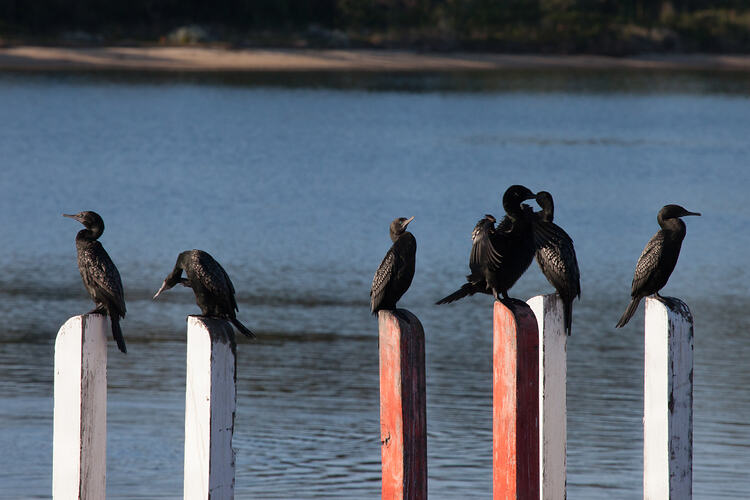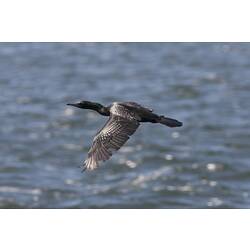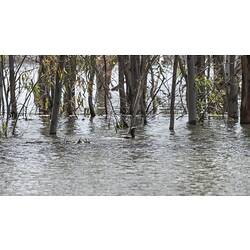General Description
The Little Black Cormorant is a small, completely black cormorant with a green sheen. The bill is grey and hooked. During the breeding season, their plumage becomes more bronzed, with white flecks on their neck and head. The feet are large and fully webbed. The bill to tail length is up to 65 cm. They generally fly in a V-shaped formation.
Biology
Little Black Cormorants form large flocks, nesting in mixed-species colonies including other cormorant species, herons, ibises and spoonbills. Each nest is a large platform structure constructed from sticks, usually in a fork of a tree over water. The usual clutch size is four eggs. They spend most of their time in or around water, rarely being seen on land. The birds are nomadic, moving inland when water is abundant. They eat fish, aquatic insects and crustaceans. Prey is located from the air and captured underwater. They sometimes feed co-operatively by surrounding fish or forming lines across inlets to capture fish during low tide. Cormorants are often seen perched in groups with their wings out to the side to help their feathers dry.
Distribution
Australasia. In Australia, found throughout the mainland and Tasmania.
Habitat
Freshwater wetlands, lakes, mangroves, and sheltered coastal waters and inlets.
More Information
-
Animal Type
-
Animal SubType
-
Brief Id
A small slender cormorant with entirely black plumage. Usually seen in or near water.
-
Colours
Black
-
Maximum Size
65 cm
-
Habitats
-
Diet
Carnivore
-
Diet Categories
Fish, Insects, Crustaceans
-
Endemicity
-
Commercial
No
-
Conservation Statuses
CITES: Not listed, FFG Threatened List: Not listed, EPBC Act 1999: Not listed, IUCN Red List: Least Concern
-
Taxon Name
-
Common Name
Little Black Cormorant
-
Kingdom
-
Phylum
-
Subphylum
-
Class
-
Order
-
Family
-
Genus
-
Species Name
sulcirostris











